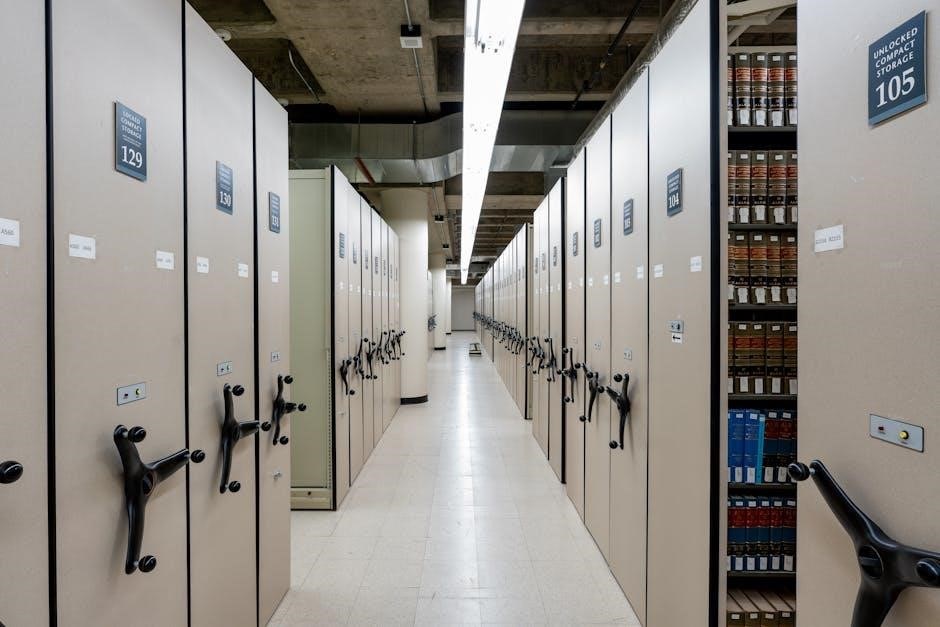The period between 1750 and 1900 marked significant social, economic, and political shifts due to industrialization, reshaping global interconnectedness and sparking transformative changes worldwide.
1.1. Overview of Industrialization and Its Global Impact
Industrialization between 1750 and 1900 revolutionized societies, driving technological advancements and economic growth while creating profound global interconnections. It transformed production processes, shifting from manual labor to mechanized systems, and spurred urbanization. Key regions like Britain, Europe, and North America became industrial hubs, influencing trade, migration, and cultural exchange. However, this period also led to environmental degradation, labor exploitation, and social inequalities, highlighting the dual nature of industrial progress and its far-reaching consequences worldwide.
1.2. Key Themes: Social, Economic, and Political Changes
Industrialization sparked profound social, economic, and political transformations. Socially, it led to urbanization and the rise of a working class, while exacerbating inequalities. Economically, it drove technological innovation, expanded global trade, and shifted wealth distribution. Politically, it fueled nationalism, imperialism, and the emergence of labor movements. These changes reshaped societies, creating both opportunities and challenges, and laid the groundwork for modern global dynamics, highlighting the complex interplay of progress and exploitation during this era.
Social Darwinism and Its Role in Imperialism
Social Darwinism justified imperialism by promoting the idea of racial superiority, claiming “survival of the fittest” applied to nations and races, legitimizing colonial domination.
2.1. Definition and Ideological Foundations of Social Darwinism
Social Darwinism applied evolutionary principles to society, emphasizing competition and “survival of the fittest.” It emerged from Charles Darwin’s theories but was popularized by thinkers like Herbert Spencer. The ideology posited that racial and national hierarchies were natural, with “superior” groups destined to dominate “inferior” ones. This belief system rationalized inequality, imperialism, and the exploitation of colonized peoples, shaping a worldview that legitimized power imbalances as biologically inevitable.
2.2. How Social Darwinism Justified Imperialism and Racial Hierarchies
Social Darwinism justified imperialism by framing it as a natural extension of evolutionary competition. European powers claimed superiority, using racial hierarchies to legitimize dominance over colonized peoples. The ideology portrayed imperialism as a “civilizing mission,” asserting that “advanced” nations had a duty to impose their values on “inferior” societies. This rationale masked economic exploitation, reinforcing the belief that subjugation was morally justifiable and biologically inevitable, further entrenching global power imbalances during the 19th century.

Labor Movements and Working-Class Conditions
The rise of labor movements addressed the harsh working conditions, including long hours, low wages, and unsafe environments, sparked by industrialization’s exploitation of the working class.
3.1. The Rise of Labor Movements in Response to Industrialization
Industrialization led to the rise of labor movements as workers faced poor conditions, long hours, and low wages. Strikes and protests emerged, demanding better rights. The formation of trade unions, such as the Knights of Labor, marked organized resistance. These movements sought to address exploitation, promote fair wages, and improve workplace safety. The rise of labor movements became a critical response to the socio-economic challenges brought by industrialization, shaping modern labor rights and protections.
3.2; Working-Class Conditions and the Emergence of Trade Unions
Industrialization led to harsh working conditions, including long hours, low wages, and unsafe environments. Workers organized to advocate for better wages, improved safety, and fair treatment. Trade unions emerged as a response, with organizations like the Knights of Labor pushing for labor reforms. These unions played a pivotal role in protecting workers’ rights and addressing exploitation, marking a significant shift in labor history and the fight for workers’ rights during this era.
Environmental Consequences of Industrialization
Industrialization caused widespread pollution, resource depletion, and deforestation, leading to significant environmental degradation. The Congo Free State exemplifies the devastating impact of industrial exploitation on ecosystems.
4.1. Types of Environmental Pollution and Their Effects
Industrialization led to air, water, and land pollution through factory emissions, chemical waste, and deforestation. Air pollution caused respiratory diseases, while water pollution harmed aquatic life and human health. Land degradation resulted from resource exploitation and waste disposal, leading to soil infertility and loss of biodiversity. These environmental impacts disproportionately affected vulnerable communities, exacerbating social and economic inequalities. The Congo Free State serves as a stark example of industrial exploitation causing severe ecological and human devastation during this period.
4.2. Case Study: The Congo Free State and Industrial Exploitation
The Congo Free State, under King Leopold II’s control, exemplified industrial exploitation. The region was ravaged for rubber and ivory, leading to forced labor, mass violence, and a drastic population decline. Environmental destruction occurred due to deforestation and resource extraction, while local communities endured immense suffering. This case highlights the devastating human and ecological costs of unchecked industrial exploitation during the era of imperialism and global economic expansion.

Migration Patterns in an Interconnected World
Migration during 1750-1900 was driven by economic globalization and urbanization, with labor systems fostering mass movement and reshaping global demographics and cultural landscapes significantly.
5.1. Economic Globalization and Urbanization as Drivers of Migration
Economic globalization during 1750-1900 fueled migration as industries expanded, creating demand for labor. Urbanization accelerated, drawing people to cities for work, while overcrowding and poor conditions pushed others to migrate. This interconnectedness reshaped societies, driving mass movement across continents. Labor systems, such as those involving Lebanese merchants and Italian laborers, exemplified economic-driven migration, while Irish settlers sought escape from hardship. These patterns transformed global demographics and cultural landscapes, highlighting migration’s role in an increasingly interconnected world.
5.2. Migration Through Labor Systems: Examples and Impacts
Migration through labor systems during 1750-1900 was driven by economic needs and industrial expansion. Contract labor systems, like those involving indentured servants and coolies, facilitated movement to plantations and mines. Lebanese merchants and Italian laborers migrated for economic opportunities, while Irish settlers sought refuge from hardship. These systems led to demographic shifts, cultural blending, and often exploitation, shaping global labor markets and fostering multicultural societies amidst industrialization’s transformative wave.
Rationales for Imperialism (1750-1900)
Imperialism during 1750-1900 was driven by economic gain, political competition, and cultural motives, shaping global power dynamics and resource exploitation.
6.1. Economic, Political, and Cultural Motives for Imperialism
Imperialism was fueled by economic interests, such as accessing raw materials and markets, political competition for global influence, and cultural beliefs in racial superiority. European nations sought resources like cotton and rubber to sustain industrial growth. Politically, imperialism bolstered national prestige and military power. Culturally, ideologies like Social Darwinism and the “civilizing mission” justified dominance, promoting European values and Christianity. These motives intertwined, driving imperialism as a multifaceted pursuit of power and influence during the 18th to 19th centuries.
6.2. The Civilizing Mission and Its Consequences
The “civilizing mission” was a ideological justification for imperialism, claiming that European powers had a duty to “civilize” non-Western societies. This belief in cultural and racial superiority led to forced assimilation, religious conversion, and the imposition of European values. While it promoted some infrastructure development, it often erased indigenous cultures, exploited local resources, and justified oppressive governance. The mission’s consequences included cultural destruction, resistance from colonized peoples, and long-lasting socio-political tensions in colonized regions.

Resistance and Adaptation to Imperialism
Colonized communities resisted imperialism through uprisings, cultural preservation, and diplomatic strategies, while others adapted by collaborating or integrating foreign practices to survive under imperial rule.
7.1. How Communities Resisted Imperialism and Industrialization
Communities resisted imperialism through uprisings, strikes, and boycotts, often led by local leaders. Labor movements emerged to challenge harsh working conditions and exploitation. Indigenous populations preserved their cultural practices and resisted assimilation. Diplomatic efforts and collaborations with sympathetic groups also played a role in undermining imperial control. These acts of defiance sought to protect cultural identity and autonomy, while addressing the socio-economic disparities exacerbated by industrialization and imperial policies.
7.2. Strategies for Managing the Effects of Imperialism
Communities adopted various strategies to manage imperialism’s impacts, including forming alliances, negotiating with imperial powers, and integrating selective aspects of foreign systems. Cultural preservation efforts focused on maintaining traditions and identities despite external pressures. Economic resilience was built through local industries and trade networks. Diplomatic resistance and strategic accommodations allowed communities to mitigate exploitation while navigating the complexities of imperial domination and industrialization-driven changes.

Global Interconnectedness and Its Consequences
Industrialization fostered global interconnectedness through expanded trade networks, technological advancements, and cultural exchanges, reshaping economies, societies, and political systems while creating new opportunities and challenges worldwide.
8.1. Economic Interconnectedness: Global Markets and Trade
Industrialization drove global economic interconnectedness by expanding trade networks and fostering interdependence among nations. The rise of industrial economies created new markets for raw materials and manufactured goods, while technological advancements facilitated faster transportation and communication. This interconnectedness led to increased global trade, economic specialization, and the emergence of global markets. However, it also resulted in economic dislocation for some regions and heightened competition for resources, exemplified by the exploitation of colonies like the Congo Free State. Migration patterns, such as Lebanese merchants and Italian laborers relocating for economic opportunities, further underscored the interconnected nature of the global economy during this period.
8.2. Cultural and Political Interconnectedness: A Changing World Order
Industrialization fostered cultural and political interconnectedness by facilitating global cultural exchange through trade and migration. The expansion of global markets spread ideas and cultural practices, while imperialism and Social Darwinism shaped international relations, driving European competition for dominance. European powers imposed their cultural and political systems on colonized regions, reshaping local cultures and governance. Migration contributed to cultural diversity and occasional tensions, reflecting the interconnected yet complex transformation of the world order during this period.
